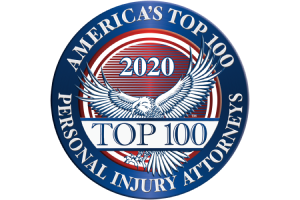Like Family.
Side Impact (T-Bone) Collision Accident Cases
A side impact collision[1], also known as a T-bone crash, often happens because someone else ran a red light or a stop sign – often when distracted by a cell phone or texting and crashed into the side of the car of a driver who was following all the rules. Atlanta injury lawyer had a case in which a college student who was driving to a job interview was t-boned by a salesman who blew past a “stop ahead” sign, rumble strips in the pavement and a stop sign. The driver admitted at the scene he was on his cell phone though he later denied it and “forgot” his cell phone number and provider to the attorneys in the lawsuit.
Unlike head-on or rear-end collisions, side impact crashes do not allow the occupant protection provided by crumple space that can absorb some of impact in the front or rear. Thus, with little to protect against the kinetic energy of the striking vehicle, most of that force hits the car occupants directly.
Side impact collisions are second only to head-on crashes in the rate of result in serious injuries and deaths. According to the National Highway Traffic Safety Administration, about one-fourth of severe injury accidents involve side impact. The National Safety Council reports that side-impact crashes, also referred to as T-bone collisions, are second only to head-on collisions in the number of serious injuries and fatalities they cause each year.
In a side-impact collision, one car hits the other in a roughly perpendicular direction. It takes the human body a split second to catch up with the intervening force.
When this happens, a whip-like snapping effect violently tosses the driver from side to side and back and forth. Airbags and seatbelts may help, but the human body can absorb only so much force. When the force exceeds the body’s ability to assimilate it, injuries ranging from sprains and whiplash, to fractures, organ damage, and even death can occur.
The impact also frequently results in secondary collisions with other vehicles and stationary objects. Consequences like your car slamming into bridge abutments, concrete lane dividers, trees, etc. are common in side-impact accidents. Rollovers can also occur when the impact is strong enough.
People riding on either side of a vehicle may be seriously injured in a side impact crash.
On the side that is hit, referred to as a near-side collision[2], serious injuries involved the chest/abdomen (49percent), head/face (24 percent), pelvis and legs (14 percent), and neck/spine (4 percent).
About 40 percent of serious injuries and deaths in side impact crashed involve people on the side opposite impact[3]. Research shows that opposite side crash fatalities were more likely to sustain serious head injuries[3] than near-side fatalities. One report said that 26 percent of far-side fatalities sustained severe injuries only to the head and no other area of the body, compared with only 18 percent for near-side fatalities.
We offer free consultation*. Call us today at 404-253-7862 or fill out our online form . We can help.
[1]http://www.iihs.org/iihs/ratings/ratings-info/side-test












